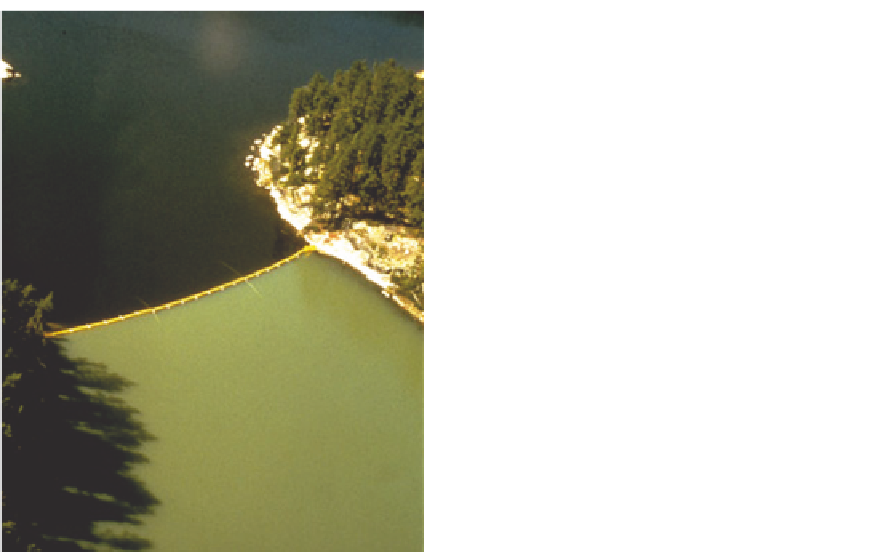Environmental Engineering Reference
In-Depth Information
FIGURE 8.1
An aerial photo of Lake 226 (Ontario,
Canada), divided at the narrows by a nylon curtain
and treated on one side (right in this photo) with car-
bon, nitrogen, and phosphorus, and on the other (left
in this photo) with only carbon and nitrogen. The
photo clearly shows the resulting algal blooms in the
side where phosphorus was included in the fertiliza-
tion mix. (From
Schindler 1977
.)
increased P inputs. This decline occurs when phytoplankton production is stimulated to
such a large degree that light levels reaching the benthos become too low to sustain
primary production. Interestingly, once a system has lost benthic plants due to nutrient
enrichment it can be difficult to restore the system's benthic plants and the system may
remain phytoplankton-dominated even after nutrients decline (see Chapter 11).
Phosphorus concentrations may select for specific types of primary producers. As just
noted, aquatic systems can switch from domination of benthic producers to planktonic
producers. Additionally, the specific benthic or planktonic producer that dominates can be
altered through changes in P inputs. Of particular interest is the switch to dominance by
cyanobacteria (blue-green algae) that can occur within the phytoplankton community
when P inputs are large. This switch has received a great deal of attention as some cyano-
bacteria produce toxins that can kill or sicken animals, including humans and livestock
that ingest the water (
Carey et al. 2012
). Additionally, many cyanobacteria can fix nitrogen,
which can be a significant input to some inland waters (see Chapter 7).
Phosphorus can also limit production of consumers (secondary production), including
bacteria, fungi, and animals, which use organic P created by primary producers to meet
their P requirements. Both bacteria and fungi can supplement this organic P with inor-
ganic P taken up directly from the environment. In fact, bacteria can compete effectively
with phytoplankton for inorganic P. Despite their two possible modes of P uptake, hetero-
trophic bacteria are P-limited in many aquatic systems. This limitation can translate into


